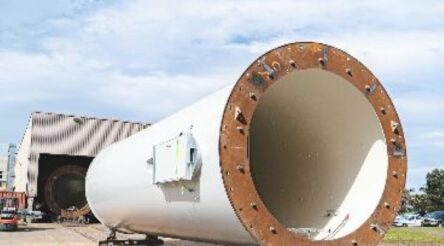How to reindustrialise Australia – by Lance Worrall

In March @AuManufacturing analysed the failings of Australian industry policy and its outcome – our fragile and narrowly based commodity economy. Here Lance Worrall looks forward to the elements of the reindustrialisation policy we need to reverse Australia’s economic decline.
We need a strategy for reindustrialisation. Without it Australia is the loser.
We need a national industrial policy to add value to our immense natural resources, instead of simply exporting them in low-value unprocessed form. We need it for higher self-sufficiency to combat external shocks.
We need it to help grow new complex, knowledge-intensive industries. We need a strategy to reap the major economic benefits of orderly and planned decarbonisation, and to make Australia the renewable energy superpower it should be.
An industrial strategy would help overcome our lock-in to declining carbon-polluting extractive industries, help us achieve fuller employment, and economic growth that is inclusive of all Australians.
What is Industrial policy?
The central objective of a serious industrial policy – practiced increasingly across advanced economies – is to set desired directions for the nation’s industrial structure.
It targets activities and sectors that have high returns to society by virtue of their knowledge-intensity (‘complexity’) and high positive spill-overs to other parts of the economy, together with their capacity to address system-wide challenges like decarbonisation and inequality.
An industrial strategy is not passive public subsidies or hand-outs. It is a vision with concrete plans to achieve a desired future economic structure.
It is comprehensive and forms a complete cycle of forward-looking processes, policies and interventions to set whole industry sectors on to desired pathways, not just correct market failures.
A National Body
Crucially, successful industrial strategy is led by respected and accountable public institutions.
Across nations, these take many forms. But Australia completely lacks such a national body, comparable in leadership status and capability to say, Singapore’s Economic Development Board, or equivalent bodies in East Asia, Scandinavia, or Germany.
Reindustrialisation is nothing more than a wish without a leading, expert and authoritative national body to aggregate and utilise information and analysis, devise industry roadmaps and plans, and make the case for specific actions.
Critically, the body would build support for the national plan amongst the stakeholders whose commitments are critical to its success: industry and unions, Commonwealth and state governments, and the education and research sectors at all levels.
The national body would institute inclusive processes, recognising the role of the many – not just the few – in wealth creation, and our future economic development.
Recognising this, AuManufacturing’s Australian Manufacturing Forum has previously called for a National Industrial Strategy led by a national body – a National Industrial Strategy Commission (NISC) – a New Deal Plan for Manufacturing. Whether called a Commission or something else, the role of a national leading body is critical.
What would the NISC do?
It would devise the comprehensive overarching strategy and sector plans for Australia’s reindustrialisation.
An NISC would help ensure support for the strategy by the critical stakeholders who must make it happen. The NISC’s plans would work to explicit goals, targets and timelines.
It would also lead the conversation with the Australian public about the long term generational strategy for reindustrialisation.
The national strategy would aim for a desired industry structure, together with a degree of domestic sovereignty and self-sufficiency, complemented by increased participation in global value chains.
This means defining and analysing what we can and should specialise in, then devising the plans and actions to develop the opportunity. The national strategy needs to be a complete cycle, which identifies existing and potential future industrial opportunities, then confirms the opportunities and target sectors by:
- Analysing our current and future strengths and weaknesses
- Understanding competitors and suppliers
- Looking at anticipated international market conditions and industry demand
- Understanding the industry’s economics and structure (minimum efficient scale, barriers to entry)
- Assessing the size and significance of the opportunity
- And defining the decisive points along the value chain where Australia could participate.
Following assessment of the opportunity, the process moves to defining the desired pathways for development, designing the required strategies, interventions, and policies and programs, and then putting these into practice in a sector strategy and roadmap, with defined targets and timelines. These processes form a complete cycle because they are continuous.
The most comprehensive model for this type of approach is the recent Biden Executive Order on 100-Day Supply Chain Review and Sectoral Supply Chain Assessments.
Lazy critics will say this is all too much (‘just let business get on with it’), without considering what is required, and without bothering that such institutions and processes increasingly characterise many of the countries we like to compare ourselves to.
They will say, again without serious consideration, that it is too ‘bureaucratic’ – even though a key purpose is to bring the idea of social partnership back into economic development, recognising roles of all in wealth creation.
Their alternative is to stay with the ‘do-nothing’ status quo, remaining locked-in to extraction of resources a decarbonising world can no longer use, with progressively lower living standards for Australians.
We can make the changes on terms favourable to us, or wait for the changes to be made to us, on terms not of our choosing.
The NISC’s first two agenda items should be plans for onshore processing of our high-value minerals (not just exporting them in unprocessed form), and decarbonisation as the backbone of Australia’s reindustrialisation.
- Note: Many of these themes are expanded on in a report the author worked on, ‘Manufacturing Transformation for the 21st Century‘ by the Australian Industrial Transformation Institute at Flinders University.
Lance Worrall was a policy adviser to Mike Rann as both Opposition Leader and Premier of South Australia. He has been a senior public servant and most recently worked on industrial transformation initiatives for the Innovative Manufacturing Cooperative Research Centre and Flinders University. He is the author of many reports on economic and industrial development.
Picture: Q-CTRL/quantum computing hardware
Subscribe to our free @AuManufacturing newsletter here.
@aumanufacturing Sections
Analysis and Commentary Awards Defence Manufacturing News Podcast Technology Videos










